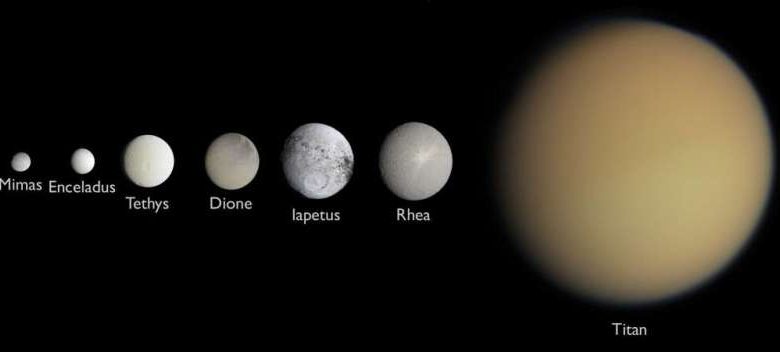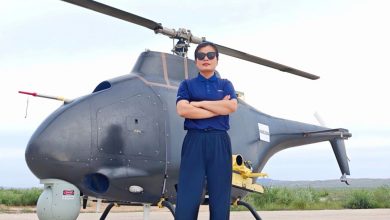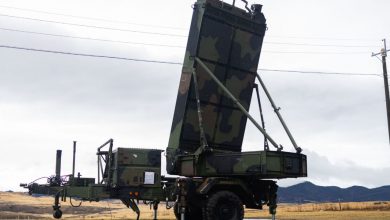One spacecraft could visit all of Saturn’s inner large moons

If you’ve ever played Kerbal Space Program, you know how difficult it can be to get your spacecraft into the orbit you want. It’s even more difficult in real life. This is why it’s pretty impressive to see a proposal to study all of Saturn’s large inner moons in one go.
At a broad level, orbits are pretty simple. Planets and moons are basically ellipses. Once set into motion, spacecraft generally follow an elliptical or parabolic path, so it’s just a matter of lining up your spacecraft’s orbit with your destination and point of origin. You can do the calculations by hand if you know the math. Several early science fiction authors such as Robert Heinlein and Hal Clement did just that to ensure their space-travel stories were accurate.
But these types of simple calculations only determine fly-by paths, and they don’t take into account energy-saving tricks such as gravitational slingshots. The energy demands of getting a spacecraft to the outer solar system are so high that even the early missions to Jupiter and beyond relied on gravitational assists, which are difficult to calculate.
And as we’ve seen from missions such as Juno and Cassini, it’s extremely useful to put a spacecraft in orbit around a planet so we have plenty of time to gather data. Ideally, for something such as a mission to Saturn, you’d want to reach the ringed planet in a reasonable time, then move into a series of orbits around the planet that makes several flybys of interesting moons, but that’s a big ask for a mission.
One of the challenges has to do with orbital energy. To reach Saturn quickly, you’d need to build up a great deal of speed. To get into orbit you have to take much of that speed away. This is particularly challenging if you want your spacecraft to orbit deep in the planet’s gravitational well. For the Cassini mission, the team reached a compromise using orbits that dipped close to the inner moons of Saturn from time to time. This was fine because a main focus of Cassini was the moon Titan, which is relatively far away from Saturn.
For a return mission to Saturn, astronomers would really like to get a good view of Enceladus. We know it has plenty of liquid water, and it’s an excellent candidate for life. But it’s deep within Saturn’s gravitational well, with an orbital radius only one-fifth that of Titan. At the moment, the strongest proposed mission is the Enceladus Orbilander, which would orbit the moon for about 18 months. But this would prevent the mission from deeply studying other Saturnian moons.
This is where this new proposal comes in. Rather than simply focusing on Enceladus, why not spend time around all the major moons of Saturn? To achieve this, the team proposes a complex set of orbits that relies on an electric propulsion engine. Also known as an ion thruster, such an engine could provide a tiny amount of thrust over extended times. The idea is to gradually shift orbits rather than shifting orbits in a single go. These dynamic orbits are really difficult to calculate, but they are extremely energy efficient and can be adjusted over time.
In their proposal, the team shows how electric propulsion could power a mission to visit not only Enceladus and Titan, but also Dione, Tethys, and Mimas. Depending on priorities, the mission could be put in orbit around each of these moons, making several close approaches to each world. Depending on the length of the mission, the electric propulsion could be either solar or nuclear powered.
This initial proposal is just a proof of concept, but it shows that the next mission to Saturn doesn’t have to choose between Either Enceladus or another moon. It’s possible to take a grand tour of the Saturnian system if only we can be steely-eyed about the orbital paths we choose.





